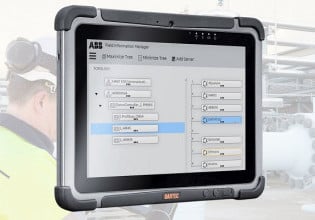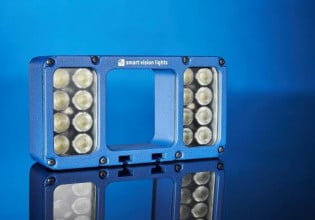Mitsubishi Electric: Industrial Safety is Now a Little Easier
A new CIP Safety communication module has been designed to work with Mitsubishi’s iQ-R series PLC, a module that also supports Ethernet/IP as well as CC-Link IE TSN networks.
Common industrial protocol (CIP) safety devices have been around in the industry for quite some time, but recently, many manufacturers have been adding devices that can be connected to the network that support CIP safety. This technology allows for simple connection of safety devices and controls them over a common protocol on ethernet infrastructure.

New CIP safety module from Mitsubishi Electric Factory Automation. Image courtesy of Mitsubishi Electric
MELSEC iQ-R Series CIP Safety Module
Combined with the Mitsubishi iQ-R Safety-rated PLC, the new CIP Safety module from Mitsubishi provides a new solution for high-risk operations. The module occupies two slots in the PLC rack and allows designers to connect not only Mitsubishi safety devices, but products from third parties as well.
This module supports CIP safety and Ethernet/IP protocols, so it can be used along with non-safe components on the same network. The IQ-R PLC and the CIP safety module both comply with international safety standards ISO 13849-1 Cat 4 PL e and IEC 61508 SIL 3, allowing designers to design safe and reliable automated systems.
Each PLC rack can contain up to two modules, and topologies of ring, star, or line are also supported. Programming and control of the devices take place in the iQ-R PLC and include dual redundant processors. TUV Rheinland-certified function blocks are provided for programmers to build certified safe logic. Each module consists of four ethernet modules with a maximum cable length of 100 m. CC-Link IE TSN, which is an ultra-high-speed and high-capacity network that is also time-sensitive, is supported on the same rack as the CIP safety module, and the CIP safety traffic is tunneled through the CC-Link IE TSN master to the targeted device.
Devices on the CIP safety network can have an RPI (request packet interval) of 4 - 1000 milliseconds and a maximum data size of 14 bytes per connection. Each module can have up to 128 connected devices with a combined data size of 16 kilobytes.

Diagram of safety networks represented on the CIP safety module. Image courtesy of Mitsubishi Electric
Safety Systems Redesigned
For the longest time, safety components were required to be hard-wired back to a safety input/output card or a safety PLC.
Today, with the help of components such as the iQ-R CIP Safety module and iQ-R Safety PLC, safety devices can use the same infrastructure as non-safe field devices. This reduces wiring and troubleshooting significantly for large equipment with multiple safety devices stretched out over a large distance.
Door switches are a common problem with equipment builders, especially if the customer requests different types of door switches. Not only does the wiring on the door switch need to be confirmed and inspected, but the input and output cards will need to be configured for the particular door switch. Light curtains often have their wire check diagnostic features which will often require different configurations of safety input cards. Integrators unaware of these special configurations will often spend many hours troubleshooting wiring issues that don’t exist Safety systems shouldn’t be complicated, they should be simple to understand and configure.
By using CIP safety devices whenever possible, you ensure an easy-to-understand topology that is configurable for automation systems of any scale.






